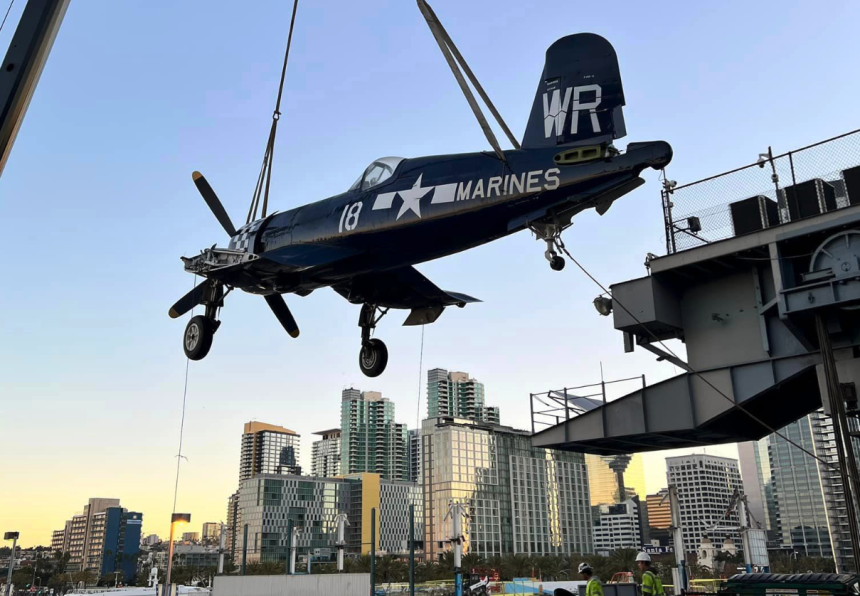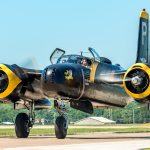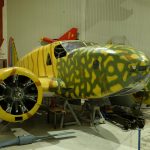Another Corsair is making headlines, as the USS Midway Museum in San Diego has welcomed a newly restored F4U-4 Corsair (BuNo 97349) to its collection. This follows the recent addition of FG-1D Corsair (BuNo 92013) to New York’s Intrepid Sea, Air & Space Museum. On November 16th, the Midway Museum took delivery of BuNo 97349, a loan from the National Naval Aviation Museum (NNAM) in Pensacola, Florida.
The National Naval Aviation Museum recently completed a meticulous 14-year restoration of an extremely rare “birdcage” Corsair (BuNo 02465). This historically significant aircraft has now taken its place in the museum’s World War II section, located in the West Wing. With this new addition and another FG-1D Corsair (BuNo 92246) already on display, the museum was able to release BuNo 97349 to join the Midway Museum’s renowned collection.
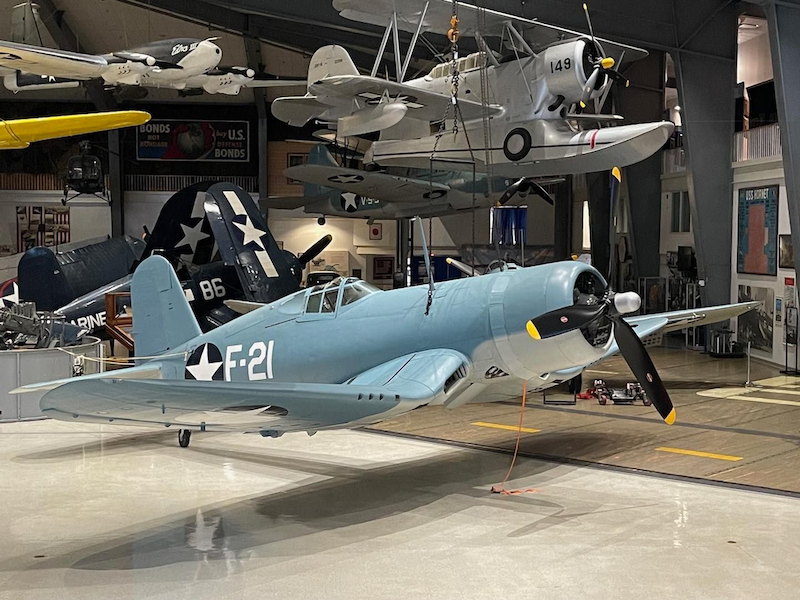
Researcher Adam Estes has delved into the complicated backstory of BuNo 97349, uncovering a tale of intertwined identities. Most sources agree on its Bureau Number (97349, manufacturer’s number 9503), but records also reveal the mixing of parts from another Corsair, BuNo 97142 (manufacturer’s number 9296). The story begins after both aircraft were stricken from U.S. Navy service and placed in storage at Naval Air Station Litchfield Park, Arizona (now Phoenix Goodyear Airport). These Corsairs were among several sold by surplus dealer Robert Bean, who famously provided aircraft to Honduras for use in the 1969 Football War against El Salvador. However, 97349 and 97142 were never shipped to Central America and remained in Arizona.

BuNo 97349 found its way to public view in the 1960s, displayed at the Tucson Inn Motel in Tucson, Arizona. Meanwhile, BuNo 97142 remained in storage at Tucson Airport. By 1978, aircraft restorer Arthur W. McDonnell acquired both Corsairs and transported them to Mojave Airport, California.
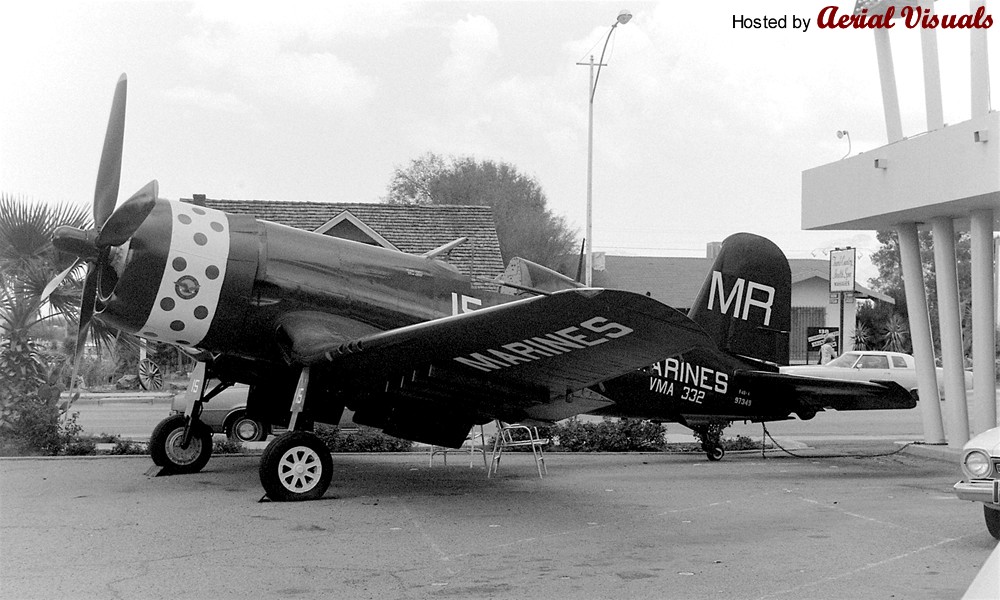
McDonnell was contracted by the Marine Corps Museum (now the National Museum of the Marine Corps) in Quantico, Virginia, to restore aircraft for its collection. During this restoration process, parts—and potentially even data plates—of 97349 and 97142 were inadvertently swapped, further entangling their histories. In 1984, BuNo 97349 was painted in Marine Corps colors as WR-18 and sent to Pensacola for display at NNAM. Meanwhile, the other aircraft, labeled as 97142 but possibly containing parts of 97349, was loaned to the Pima Air and Space Museum in Tucson, Arizona, where it remains today.
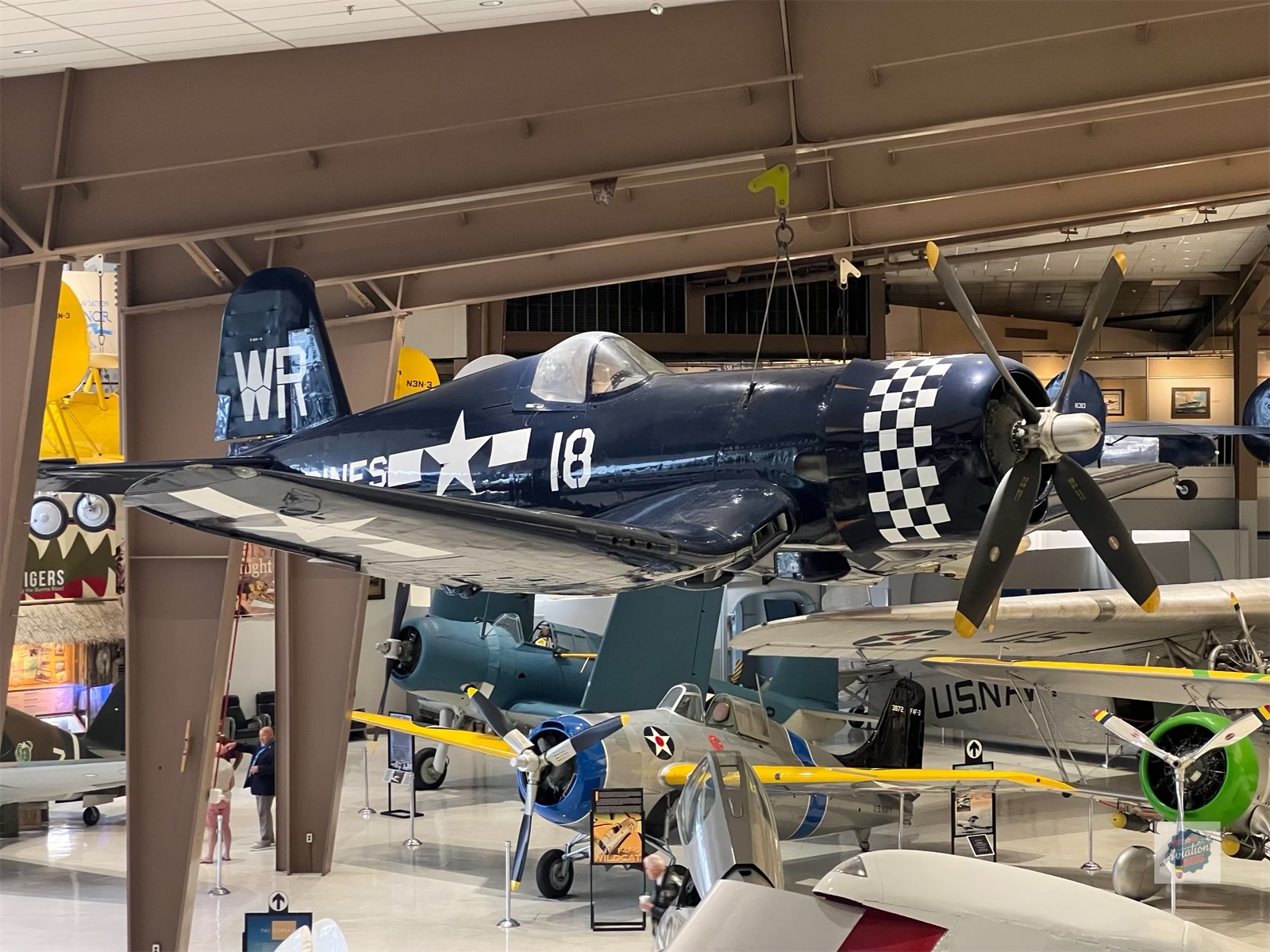
BuNo 97349 has now embarked on the next chapter of its journey. Carefully loaded onto the lower deck of the USS Midway, the aircraft will soon be reassembled and displayed in the museum’s “Hangar Deck,” which is also home to another F4U-4 Corsair, Bureau Number 96885, which has been on loan to the Midway Museum in 2006. Visitors to the Midway Museum will have the opportunity to admire this Corsair and its storied past, adding another layer of history to one of America’s most celebrated aircraft carriers. Corsair’s move underscores the collaborative efforts of aviation museums to preserve and share the legacy of these iconic warbirds. For more information about the USS Midway Museum, visit www.midway.org







